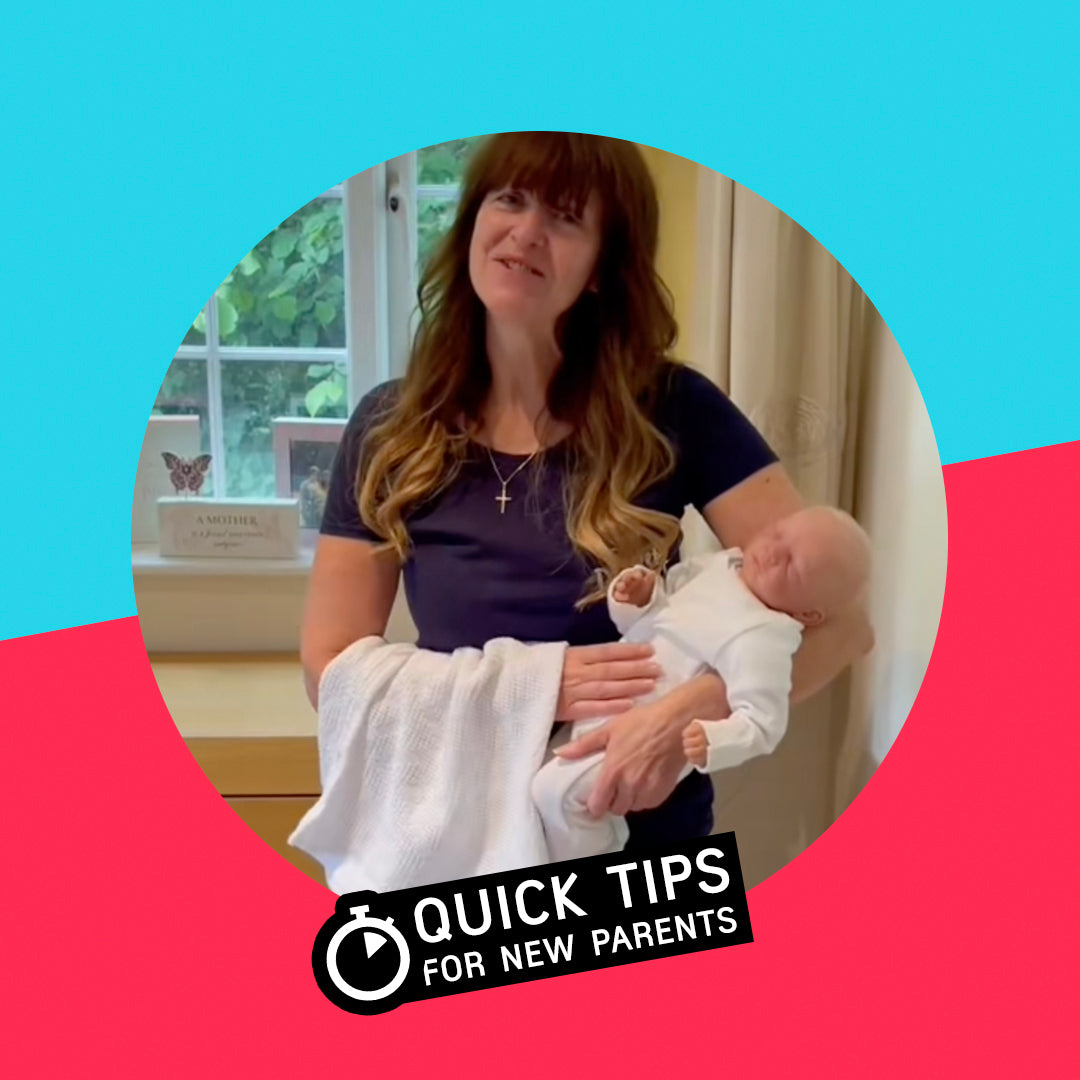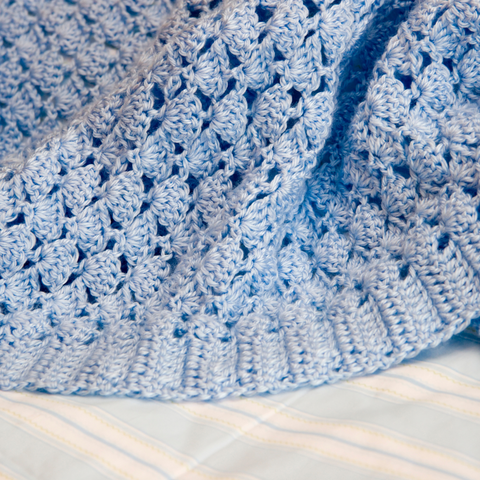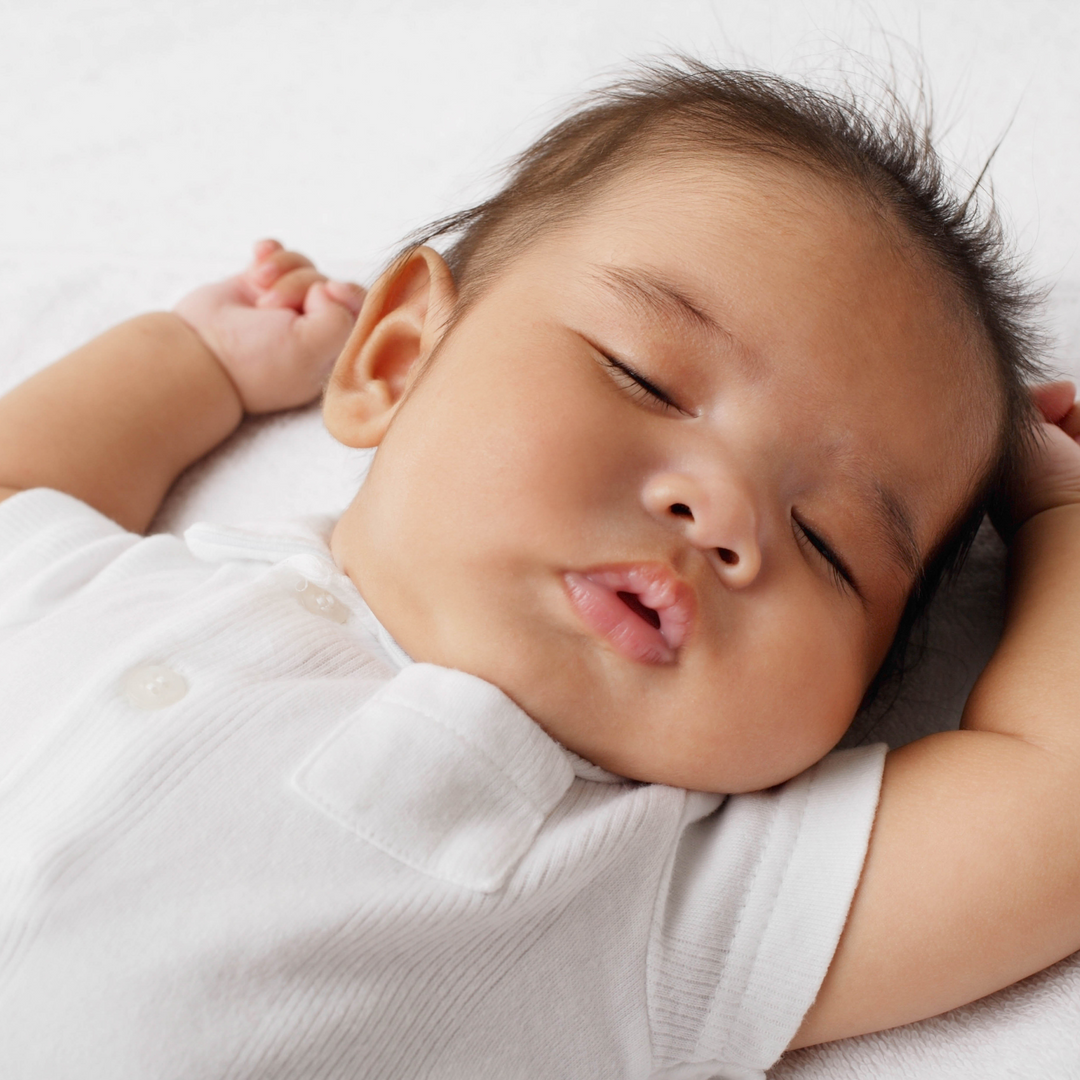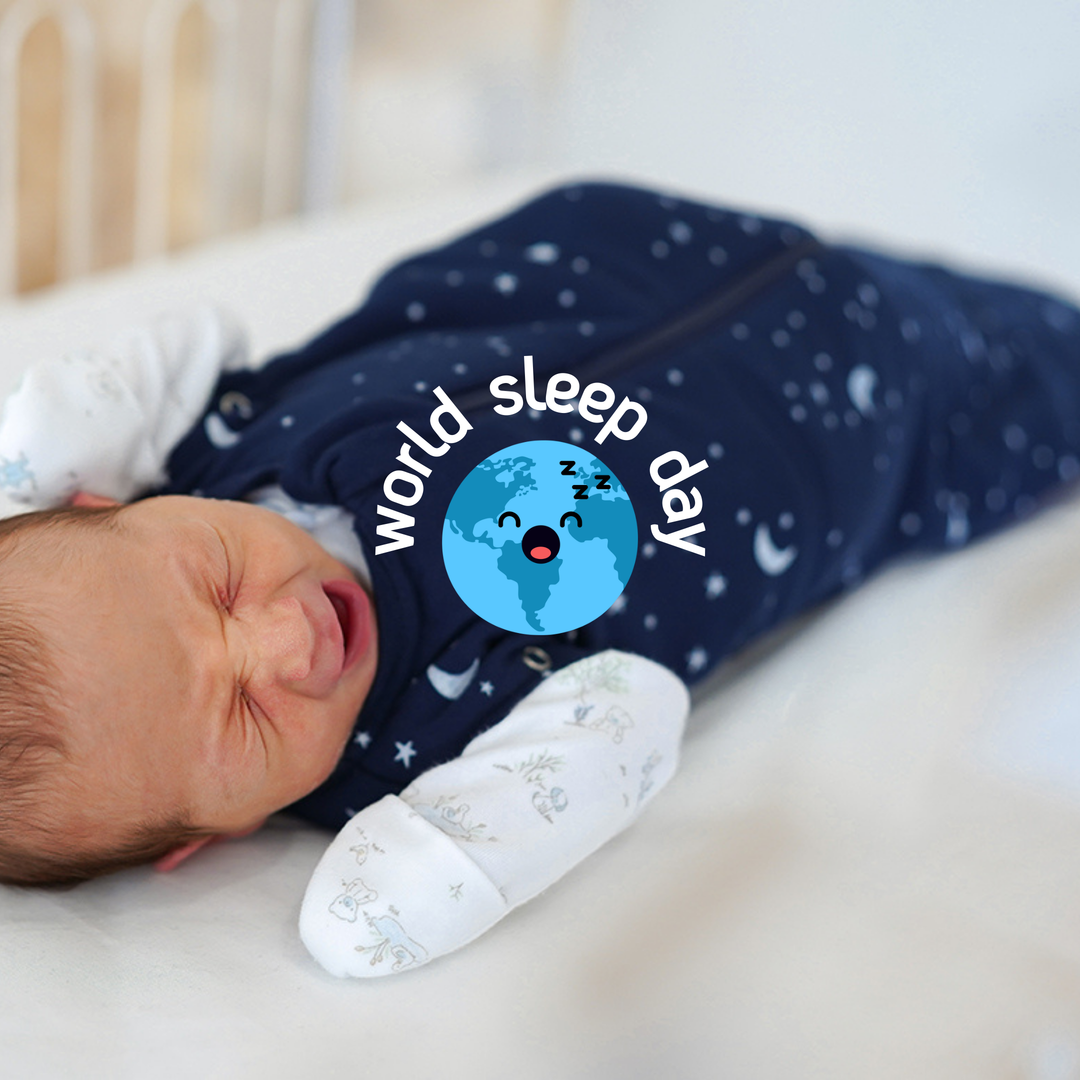Quick Tips for New Parents is our "channel" of bite sized advice for new or expecting parents. If you find this tip useful, why not check out our Tik Tok where we post similar videos daily.
The Answer In brief:
A viewer asked:
"What do you recommend if I cannot find any suitable baby sleep bags?"
If you can't find a suitable sleeping bag for your young baby, then the NHS recommend using a lightweight cellular blanket, or a sheet.
Here are the important things to remember when using a blanket with a young baby:
Firstly place your baby on their back with their feet to the foot of the cot or Moses basket.
Then take your cellular blanket, place it across their chest so that it fits underneath their armpits. Tuck the remaining 3 sides firmly under the mattress.
Once this is done, you can place your baby's arm down over the top of the blanket so it stays firmly in place. *Do not put the blanket high up by their neck!
*** This is really important, because if you place your baby at the top of the cot or Moses basket with a loosely fitted sheet, they could wriggle down underneath and overheat, putting them at risk of SIDS - sudden infant death syndrome. ***
The Answer In detail:
As a parent, finding the right sleepwear for your baby is a crucial aspect of creating a secure and comfortable sleep environment. However, what if you can't find a suitable baby sleep bag? In such situations, the National Health Service (NHS) offers valuable guidance on alternative options, emphasizing the use of lightweight cellular blankets or sheets. In this blog, we'll delve into the recommendations provided by the NHS and highlight important considerations when opting for blankets to ensure your baby sleeps safely.
The NHS Recommendation
When faced with the challenge of not finding a suitable baby sleep bag, the NHS recommends turning to lightweight cellular blankets or sheets as an alternative. Cellular blankets are known for their breathability, making them a suitable choice for maintaining a comfortable sleep temperature for your little one.
Key Guidelines for Using Blankets
If you choose to use a blanket for your baby's sleep, it's essential to follow specific guidelines to prioritise their safety. Here's a step-by-step approach recommended by the NHS:
-
Sleep Position: Always place your baby on their back with their feet positioned at the foot of the cot or Moses basket. This position is associated with a lower risk of Sudden Infant Death Syndrome (SIDS).
-
Blanket Placement: Take a cellular blanket and position it across your baby's chest so that it fits underneath their armpits. This ensures that the blanket is appropriately secured without reaching high up by their neck.
-
Secure Tucking: Tuck the remaining three sides of the blanket firmly under the mattress. This helps prevent any loose fabric that could pose a risk to your baby.
-
Arm Placement: Gently place your baby's arm over the top of the blanket to help keep it firmly in place. This step contributes to maintaining a secure sleeping environment.
-
Avoid High Placement: It's crucial to refrain from placing the blanket high up by your baby's neck. This precaution is vital to prevent any potential hazards associated with loose bedding.
*** Importance of Proper Placement: *** Placing your baby at the top of the cot or Moses basket with a loosely fitted sheet can create risks, such as overheating and the possibility of your baby wriggling down underneath the bedding. Overheating and entanglement pose potential dangers, increasing the risk of Sudden Infant Death Syndrome (SIDS).
While baby sleep bags are a popular choice for secure sleep, the NHS provides a practical alternative when faced with challenges in finding a suitable one. By following the recommended guidelines for using lightweight cellular blankets or sheets, you can ensure that your baby sleeps safely and comfortably. Always prioritise proper positioning, secure tucking, and avoiding high placement to mitigate potential risks. As a parent, your commitment to creating a safe sleep environment contributes to the well-being and sound sleep of your precious little one.












